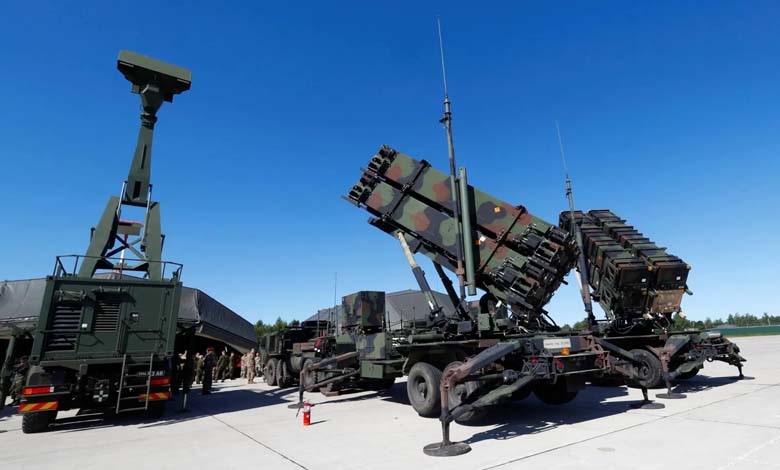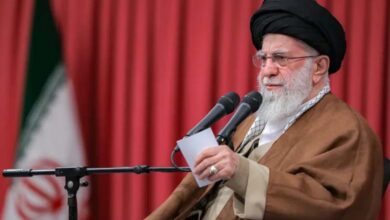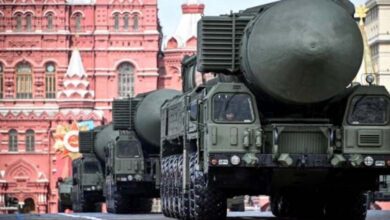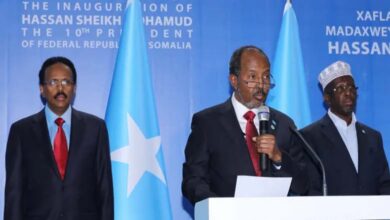The FCAS crisis: a European rift threatening defense cooperation and the next-generation fighter jet

In a move that could deal a severe blow to European defense cooperation, Germany is considering dropping France as a partner in the €100 billion (£87 billion) fighter jet program.
According to The Telegraph, Berlin is exploring the possibility of involving Sweden or the United Kingdom instead, amid growing disagreements over work-sharing arrangements.
The Future Combat Air System (FCAS), a joint program launched in 2017 by Germany, France, and Spain, is intended to replace the Rafale and Eurofighter Typhoon by 2040. However, ongoing disputes have cast doubt on the future of this flagship project meant to symbolize European defense integration.
-
During military drills: the Tsirkon missile appears on the Russian stage
-
On NATO’s Doorstep… A New Russian Facility Raises Western Concerns
The European fighter jet under scrutiny
Last week, the German Ministry of Defense discussed the future of FCAS with Airbus, which leads the German side of the program, voicing dissatisfaction over France’s push to secure the lion’s share of production.
According to Politico, citing sources, Airbus was told that Berlin might abandon France and move forward with Sweden, the UK, or Spain alone.
“At some point, the Bundestag will have to decide: do we need this aircraft or not,” warned Andreas Schwarz, a Social Democratic lawmaker, stressing that production has not yet begun and many hurdles remain ahead.
A source told the Financial Times: “There will be a fighter jet, whether France participates or not.”
-
Russian Advance in Donetsk: The Battlefield Outpaces Diplomacy in Ukraine
-
Unexpected Russian Interpretation of Missile Deployment Agreement… A Frightening Outcome
A fracture at the heart of European cooperation
Switching partners would represent a dramatic shift for a program designed to showcase European defense cooperation.
The reports come at a time when Europe is stepping up its military defenses in response to the growing threat posed by Russia. Recently, Moscow sent three MiG-31 jets into Estonian airspace, only days after nearly 20 Russian drones flew over Poland, prompting NATO fighters to intercept them—marking the first documented instance of direct military engagement between the Alliance and Moscow.
-
Due to Western sanctions: Russian passenger plane crashes, all passengers feared dead
-
Chaos at Russian Airports and Sleepless Nights in Ukraine… Peace Remains Elusive
A system rather than a single aircraft
FCAS is not conceived as a single aircraft but as a broader system—the Next Generation Weapon System (NGWS)—combining a next-generation fighter with drones, advanced weaponry, and integrated communication networks.
The central sticking point remains the division of work among Airbus (Germany), Dassault Aviation (France), and Indra Sistemas (Spain). Dassault, the successful manufacturer of the Rafale, reportedly demands 80% of the fighter development, a claim disputed by Airbus, which argues that all three partners had already agreed on the current balanced framework.
-
Ukraine’s Patriot and Russian Sanctions: A Decisive U.S. Move or a Trial of Frontlines?
-
Business Insider: Satellite Images Reveal 5 Secret Russian Nuclear Bases
A political and industrial deadlock
In July, French President Emmanuel Macron and German Chancellor Friedrich Merz set the end of 2025 as a deadline to resolve the crisis before moving to the program’s second phase, involving prototype production.
On Thursday, Merz said that Berlin was in talks with Paris and seeking a swift resolution but cautioned that “things cannot continue as they are now.”
Defense ministers from Spain, Germany, and France are scheduled to meet in October to chart the way forward, though finding new partners at this stage would not be easy.
-
Night drones flood Russian skies: Two killed in Lipetsk and Tula
-
Broadcasting the Apocalypse Signal: Mysterious Messages Hint at a Russian Superweapon
The British alternative
The UK is already leading the Global Combat Air Programme (GCAP), run by BAE Systems in partnership with Italy and Japan. Like FCAS, GCAP revolves around a central manned fighter, the Tempest, supported by drones and next-generation technologies.
However, the idea that BAE could effectively participate in two competing programs seems unlikely.
Should Germany and France go their separate ways, it would significantly complicate the already fragile landscape of European defense aviation, fueling doubts over whether the continent can truly sustain such an ambitious and costly undertaking.












